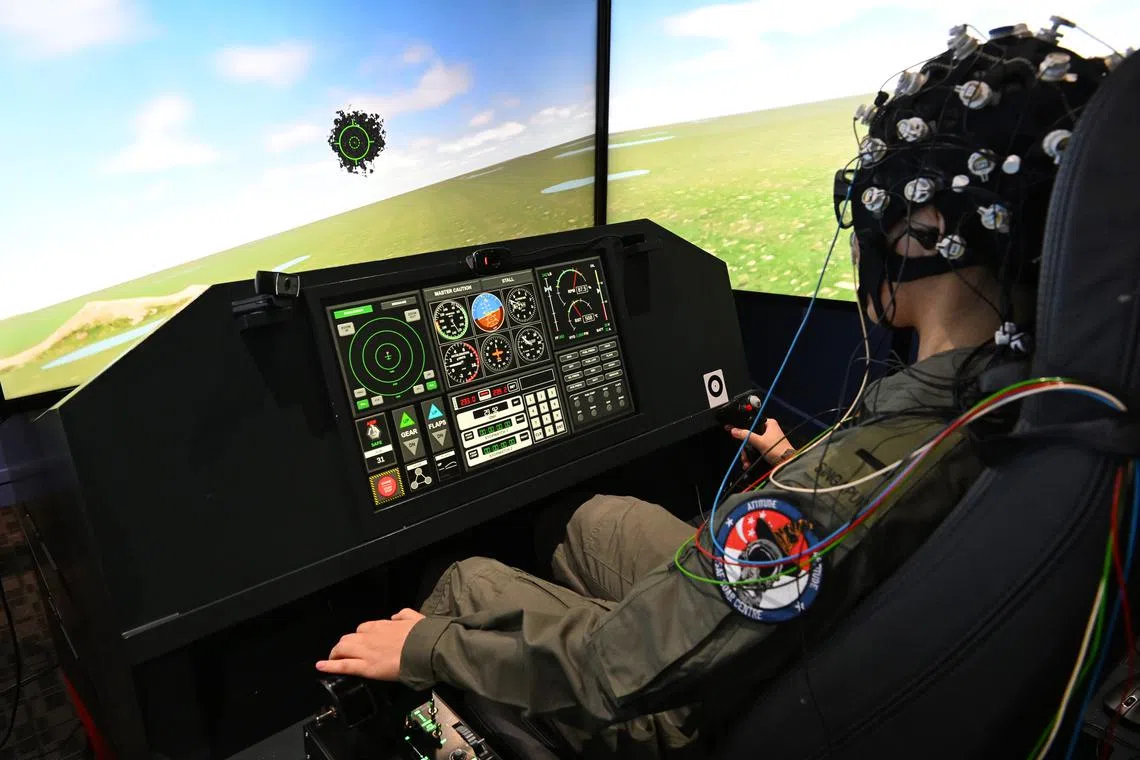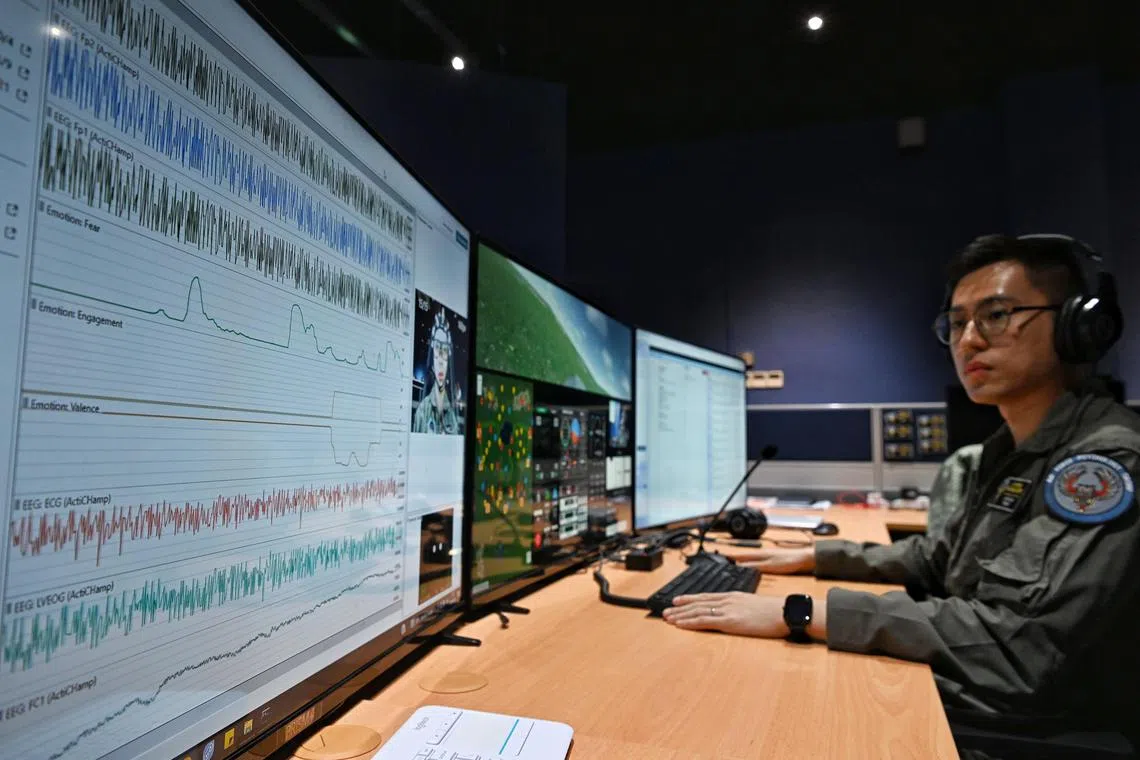RSAF taps AI and data analytics in its flight simulators to assess trainee pilots
Sign up now: Get ST's newsletters delivered to your inbox

Pilot trainee 2LT Natalie Quahe training on the flight simulator at the Project SOAR Simulator Centre at Air Force Training Command.
ST PHOTO: CHONG JUN LIANG
Follow topic:
SINGAPORE - Potential air force pilots will be trained and assessed with the help of artificial intelligence and data analytics through a number of missions and manoeuvres, including shooting down a target.
The Republic of Singapore Air Force’s (RSAF) new experimental programme – Project SOAR – will see trainees strapped to flight simulators and sports wearables that capture their eye movement, heart rate and even facial expressions.
The data collected is fed to a system which uses machine learning to create a predictive model, which then determines the “pilot potential” of each trainee.
RSAF, which showcased the experimental project on Thursday, said pilot hopefuls will undergo a 10-day training at the Air Force Training Command in Singapore.
Major Jeremy Lim, head of SOAR, said trainees are typically sent to the Air Grading Centre in Australia, fresh out of basic military training, without any prior flying experience, and after a series of assessments.
Over a four- to five-week period in Australia, they undergo aptitude tests by flying the CT-4B military training aircraft.
Maj Lim, a qualified flying instructor who pilots F-16s, said instructors may not be able to learn enough about the trainees’ capabilities this way.
With SOAR, trainees learn flight techniques like take-off and landing through the flight simulator. They can also be put through riskier scenarios like shooting at targets and handling emergency situations.
The flight simulator can be customised to simulate overseas environments, down to specific weather conditions.
Trainees don a helmet and sports science wearables that allow instructors and aviation psychologists to monitor and collect psychophysiological measurements like heart rate and eye movement.

RSAF aviation psychologist Aaron Lim monitors the brainwave and heart rate signals of a pilot trainee during a training session.
ST PHOTO: CHONG JUN LIANG
Maj Lim said the data collected, including altitude and air speed, is assessed by the system and instructors, to help them determine if the trainee has the potential in passing subsequent training.
He added that flight techniques covered over four to five weeks of real-life training can now be completed in four days.
Previously, instructors, who accompanied trainees on live flights, had to write down their observations on paper. They did this in addition to giving trainees instruction and monitoring the safety of the aircraft, which made flying a “task load heavy job”, said Maj Lim.
With SOAR, the data is automatically recorded and used to glean trainees’ strengths and weaknesses, and identify areas to work on during live flights.
Maj Lim said: “Right now, I can channel more attention to instructing the trainee... I don’t have to keep staring at those instruments to monitor (flight data).”
He added that the simulator can also capture information that the naked eye cannot see. For example, the eye tracker shows accurately where the pilot trainees are looking.
Instructors use it to see if trainees are checking both outside and inside the aircraft, and not just fixing their gaze on flight instruments, said Maj Lim.
To date, 250 trainees have completed SOAR, which started its first run in 2021.
RSAF said the experimental programme is not fully operationalised yet, and will be evaluated for future use.


